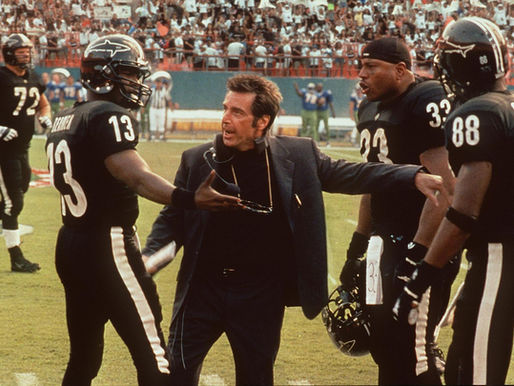top of page
Search
Action
Classic Action films from 1930 - 1989


The Train (1964)
Released in 1964, The Train is one of the most compelling and intelligent war films ever made — a riveting blend of action, moral tension, and historical reflection. Directed by the American filmmaker John Frankenheimer and set in Nazi-occupied France during the final days of the Second World War, the film combines the technical precision of a thriller with the moral weight of a drama about art, culture, and human sacrifice.

Soames Inscker
5 min read


The Flight of the Phoenix (1965)
Robert Aldrich’s The Flight of the Phoenix (1965) remains one of the most compelling and unconventional survival dramas ever committed to film — a taut, psychological study of men under pressure, wrapped in a thrilling and meticulously constructed adventure.

Soames Inscker
5 min read


San Francisco (1936)
The 1936 MGM epic San Francisco stands as one of Hollywood’s grandest and most stirring melodramas of the 1930s, blending romance, music, and disaster spectacle in a way that would become a studio hallmark. Directed by W. S. Van Dyke — one of Metro-Goldwyn-Mayer’s most dependable and prolific craftsmen — and starring Clark Gable, Jeanette MacDonald, and Spencer Tracy, the film is both a nostalgic love letter to the titular city and an exploration of human resilience in the fa

Soames Inscker
4 min read


Capricorn One (1977)
When Capricorn One was released in 1977, audiences were still living in the shadow of the Watergate scandal and the Vietnam War—two events that had eroded public trust in government and media institutions. Against this backdrop, Peter Hyams’ taut conspiracy thriller struck a deep cultural nerve. Blending elements of science fiction, political drama, and survival adventure, Capricorn One is both an intelligent entertainment and a reflection of a paranoid age. It stands as one

Soames Inscker
5 min read


The First Great Train Robbery (1978)
Michael Crichton’s The First Great Train Robbery (released simply as The Great Train Robbery in some territories) is a delightfully crafted caper film that blends historical authenticity, dry wit, and old-fashioned adventure. Based on Crichton’s own 1975 novel, itself inspired by the true events of the 1855 Great Gold Robbery, the film captures the ingenuity and daring spirit of the Victorian age with panache.

Soames Inscker
3 min read


The Sea Wolves (1980)
Released in 1980, The Sea Wolves is a stirring, old-fashioned wartime adventure directed by Andrew V. McLaglen. Starring an illustrious ensemble of veteran British actors—Gregory Peck, Roger Moore, David Niven, and Trevor Howard—it offers a nostalgic return to the style of the classic war films of the 1950s and 1960s, even as cinema was moving towards grittier, more cynical portrayals of conflict.

Soames Inscker
4 min read


The Wild Geese (1978)
Andrew V. McLaglen’s The Wild Geese stands as one of the most iconic British war adventure films of the 1970s — a bold, muscular production that combines old-fashioned heroics, moral ambiguity, and gritty realism. Released in 1978, it features an ensemble of legendary actors including Richard Burton, Richard Harris, Roger Moore, and Hardy Krüger. The result is an engaging, if sometimes dated, blend of action, camaraderie, and commentary on the murky world of mercenary warfare

Soames Inscker
5 min read


Star Wars: Episode I – The Phantom Menace (1999)
When George Lucas returned to the galaxy far, far away in 1999 with Star Wars: Episode I – The Phantom Menace, it marked one of the most anticipated cinematic events in history. Sixteen years had passed since Return of the Jedi (1983), and the weight of expectation was immense. Fans hoped to see the origins of the saga’s mythic conflict, the rise of Darth Vader, and the early days of the Jedi Order.

Soames Inscker
6 min read


Robin Hood: Prince of Thieves (1991)
Directed by Kevin Reynolds and starring Kevin Costner, Robin Hood: Prince of Thieves is one of the most iconic swashbuckling adventures of the early 1990s. Released in 1991, it reimagines the classic English legend with a distinctly Hollywood flair — blending grand spectacle, sweeping romance, and gritty medieval realism. While often remembered as much for its flaws as its triumphs, the film remains a lavish and entertaining take on one of Britain’s most enduring folk heroes.

Soames Inscker
5 min read


Galaxy Quest (1999)
Directed by Dean Parisot and written by David Howard and Robert Gordon, Galaxy Quest is a gleefully inventive and affectionate satire of science fiction fandom and television culture. Released in 1999, the film functions both as a loving parody of Star Trek and a heartfelt ode to the fans who keep such cult universes alive. It’s a film that deftly balances comedy, adventure, and genuine emotion — a rare achievement in a genre that so easily tips into either mockery or self-in

Soames Inscker
5 min read


Twister (1996)
Directed by Jan de Bont, Twister is a high-octane disaster film that captures both the awe and the terror of nature’s fury. Released in 1996 and produced by Steven Spielberg, Kathleen Kennedy and Ian Bryce, with a screenplay by Michael Crichton and Anne-Marie Martin, the film was one of the biggest box-office hits of its decade. It’s a quintessential example of 1990s blockbuster cinema — a spectacle-driven adventure that pairs cutting-edge visual effects with a melodramatic h

Soames Inscker
4 min read


Jumanji (1995)
Joe Johnston’s Jumanji is one of the most distinctive family adventure films of the 1990s – a film that blended practical effects, groundbreaking CGI, and a surprisingly dark emotional core to deliver a story that was as much about courage, redemption, and second chances as it was about stampeding elephants and giant spiders.

Soames Inscker
4 min read


Days of Thunder (1990)
Directed by Tony Scott and produced by Don Simpson and Jerry Bruckheimer, Days of Thunder is a high-octane sports drama that captures the thrill, danger, and ego-driven world of NASCAR racing. Released in 1990, the film was designed as a star vehicle for Tom Cruise, reuniting the actor with the creative team behind Top Gun (1986).

Soames Inscker
4 min read


Batman Forever (1995)
Batman Forever, directed by Joel Schumacher and released in 1995, marked a dramatic tonal shift in the Batman film franchise. Following the darker, gothic stylings of Tim Burton’s “Batman” (1989) and “Batman Returns” (1992), Schumacher’s installment introduced a more vibrant, comic-book-inspired aesthetic.

Soames Inscker
4 min read


Any Given Sunday (1999)
Oliver Stone’s Any Given Sunday is a brash, visceral, and unrelenting dive into the heart of American football — not just the game itself, but the chaotic world that swirls around it. Released in 1999, this sprawling sports drama captures the raw physicality, political undercurrents, and ego-driven dynamics of professional football with a ferocious energy rarely seen in the genre.

Soames Inscker
3 min read


Ronin (1998)
Robert De Niro is in his element here as Sam—cool, competent, and calculating. De Niro plays him with quiet authority, bringing subtlety rather than flash to a character who’s always thinking three steps ahead. It's one of his most understated and convincing performances of the late ’90s, free of ego and all the more effective for it.

Soames Inscker
3 min read


Titanic (1997)
James Cameron’s Titanic (1997) is a film of staggering ambition, sweeping romance, and unmatched spectacle—a cinematic achievement that turned a historical tragedy into one of the most beloved and successful movies of all time. Merging epic storytelling with emotional intimacy, Titanic is both an old-fashioned romance and a technical marvel, a blockbuster that balances its grandeur with genuine pathos and human depth.

Soames Inscker
4 min read


Falling Down (1993)
Falling Down, directed by Joel Schumacher and released in 1993, is one of the most provocative and polarizing films of the 1990s. With its blend of dark satire, social commentary, and psychological drama, the film offers a disturbing yet compelling portrait of urban alienation and middle-class rage.

Soames Inscker
3 min read


True Lies (1994)
True Lies (1994) is a gleefully over-the-top action-comedy that combines the explosive spectacle of James Cameron’s blockbuster sensibilities with a playful domestic farce. Starring Arnold Schwarzenegger as a James Bond-style super-spy with a suburban alter ego, the film is equal parts high-octane thriller and screwball comedy.

Soames Inscker
4 min read


Die Hard With a Vengeance (1995)
Reuniting director John McTiernan with star Bruce Willis, this third entry in the franchise reinvents the formula as a gritty, high-octane urban action-thriller set across the sprawling chaos of New York City. With razor-sharp pacing, explosive set-pieces, and the electric chemistry between Bruce Willis and Samuel L. Jackson, Die Hard with a Vengeance is not just a worthy sequel—it’s arguably the most ambitious film in the series.

Soames Inscker
4 min read
bottom of page


